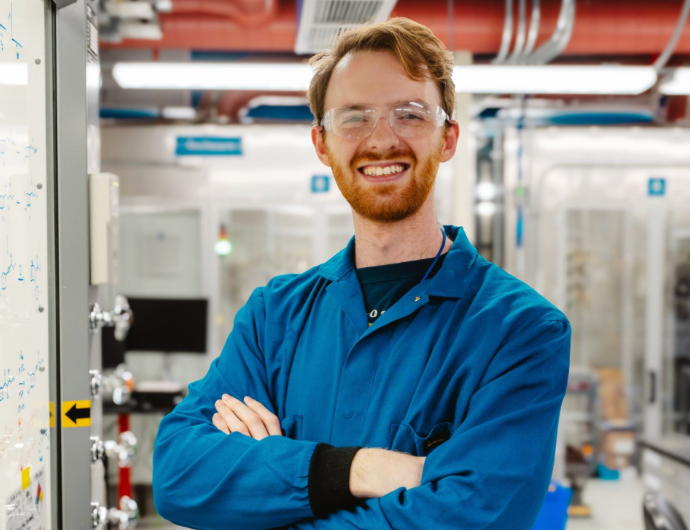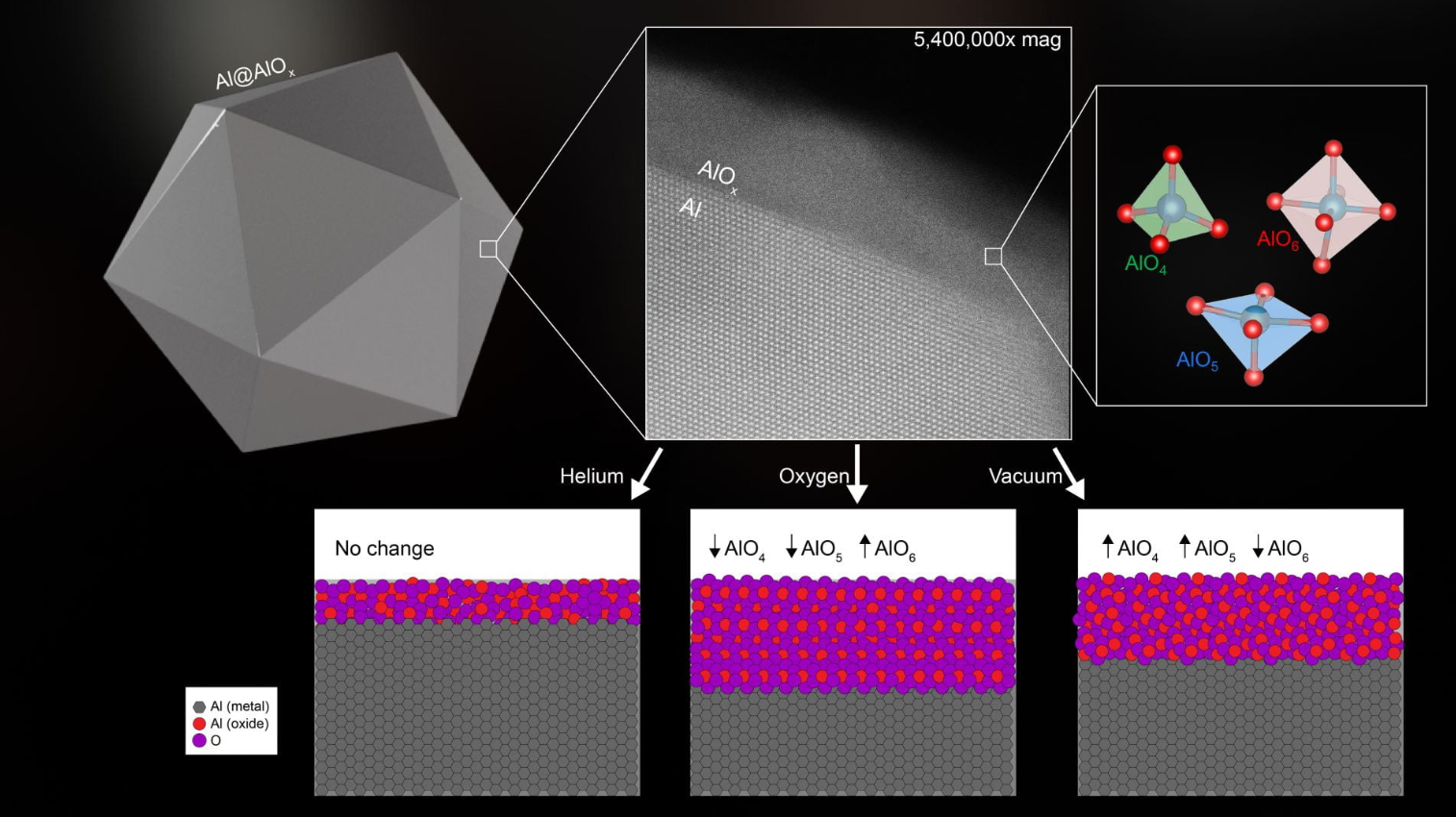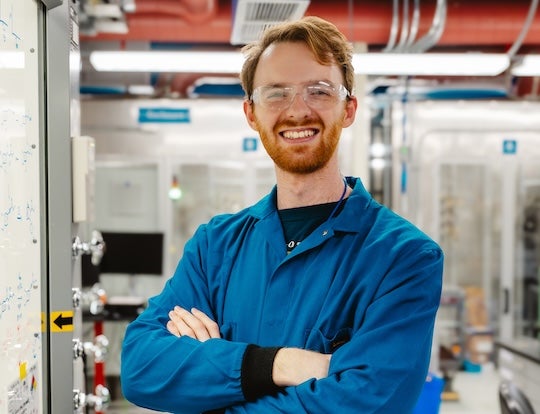Catalysts unlock pathways for chemical reactions to unfold at faster and more efficient rates, and the development of new catalytic technologies is a critical part of the green energy transition.
The Rice University lab of nanotechnology pioneer Naomi Halas has uncovered a transformative approach to harnessing the catalytic power of aluminum nanoparticles by annealing them in various gas atmospheres at high temperatures.
According to a study published in the Proceedings of the National Academy of Sciences, Rice researchers and collaborators showed that changing the structure of the oxide layer that coats the particles modifies their catalytic properties, making them a versatile tool that can be tailored to suit the needs of different contexts of use from the production of sustainable fuels to water-based reactions.

“Aluminum is an earth-abundant metal used in many structural and technological applications,” said Aaron Bayles, a Rice Fulbrighter and doctoral alum who is a lead author on the paper. “All aluminum is coated with a surface oxide, and until now we did not know what the structure of this native oxide layer on the nanoparticles was. This has been a limiting factor preventing the widespread application of aluminum nanoparticles.”
Aluminum nanoparticles absorb and scatter light with remarkable efficiency due to surface plasmon resonance, a phenomenon that describes the collective oscillation of electrons on the metal surface in response to light of specific wavelengths. Like other plasmonic nanoparticles, the aluminum nanocrystal core can function as a nanoscale optical antenna, making it a promising catalyst for light-based reactions.
“Almost every chemical, every plastic that we use on a day-to-day basis, came from a catalytic process, and many of these catalytic processes rely on precious metals like platinum, rhodium, ruthenium and others,” Bayles said.

The top half of the image shows a schematic illustration of an aluminum oxide nanoparticle (left), a microscope image of the oxide layer coating the surface of the nanoparticle (middle) and a representation of the different units in the alumina layer composition (right). The bottom half illustrates the effect of annealing on the oxide structure, which changes the thickness and arrangement of the atoms, resulting in modified optical and surface chemical properties of the aluminum nanoparticles. (Image courtesy of Aaron Bayles/Rice University)
“Our ultimate goal is to revolutionize catalysis, making it more accessible, efficient and environmentally friendly,” said Halas, who is a University Professor, Rice’s highest academic rank. “By harnessing the potential of plasmonic photocatalysis, we’re paving the way for a brighter, more sustainable future.”
The Halas group has been developing aluminum nanoparticles for plasmonic photocatalysis reactions such as decomposition of dangerous chemical warfare agents and efficient production of commodity chemicals. The newly uncovered ability to modify the surface oxides on aluminum nanoparticles further increases their versatility for use as catalysts to efficiently convert light into chemical energy.
“If you’re doing a catalytic reaction, the molecules of the substance you’re looking to transform will interact with the aluminum oxide layer rather than with the aluminum metal core, but that metallic nanocrystal core is uniquely able to absorb light very efficiently and convert it into energy, while the oxide layer fulfills the role of a reactor, transferring that energy to reactant molecules,” Bayles said.
The properties of the nanoparticles’ oxide coating determine how they interact with other molecules or materials. The study elucidates the structure of this native oxide layer on aluminum nanoparticles and shows that simple thermal treatments ⎯ i.e. heating the particles to temperatures of up to 500 degrees Celsius (932 Fahrenheit) in different gasses ⎯ can change its structure.
“The crystalline phase, intraparticle strain and defect density can all be modified by this straightforward approach,” Bayles said. “Initially, I was convinced that the thermal treatments did nothing, but the results surprised me.”
One of the effects of the thermal treatments was to make the aluminum nanoparticles better at facilitating the conversion of carbon dioxide into carbon monoxide and water.
“Changing the alumina layer in this manner affects its catalytic properties, particularly for light-driven carbon dioxide reduction, which means the nanoparticles could be useful for producing sustainable fuels,” said Bayles, who is now a postdoctoral researcher at the National Renewable Energy Laboratory.
Bayles added that the ability “to use abundant aluminum in place of precious metals could be hugely impactful to combat climate change and opens the way for other materials to be similarly enhanced.”
“It was relatively easy to do these treatments and get big changes in catalytic behavior, which is surprising because aluminum oxide is famously not reactive ⎯ it is very stable,” Bayles said. “So for something that is a little bit more reactive ⎯ like titanium oxide or copper oxide ⎯ you might see even bigger effects.”
The research was supported by the Air Force Office of Scientific Research (FA9550-15-1-0022), the Defense Threat Reduction Agency (HDTRA1-16-1-0042), the National Science Foundation (1449500, 1905757, 2239545), the Robert A. Welch Foundation (C-1220, C-1222, C-2065), the Department of Defense SMART Scholarship and Fulbright Colombia-Pasaporte a la Ciencia.


